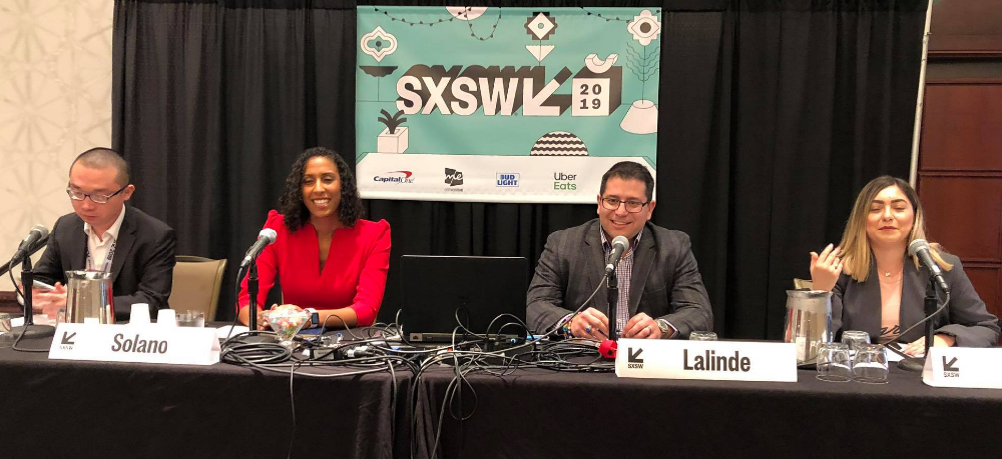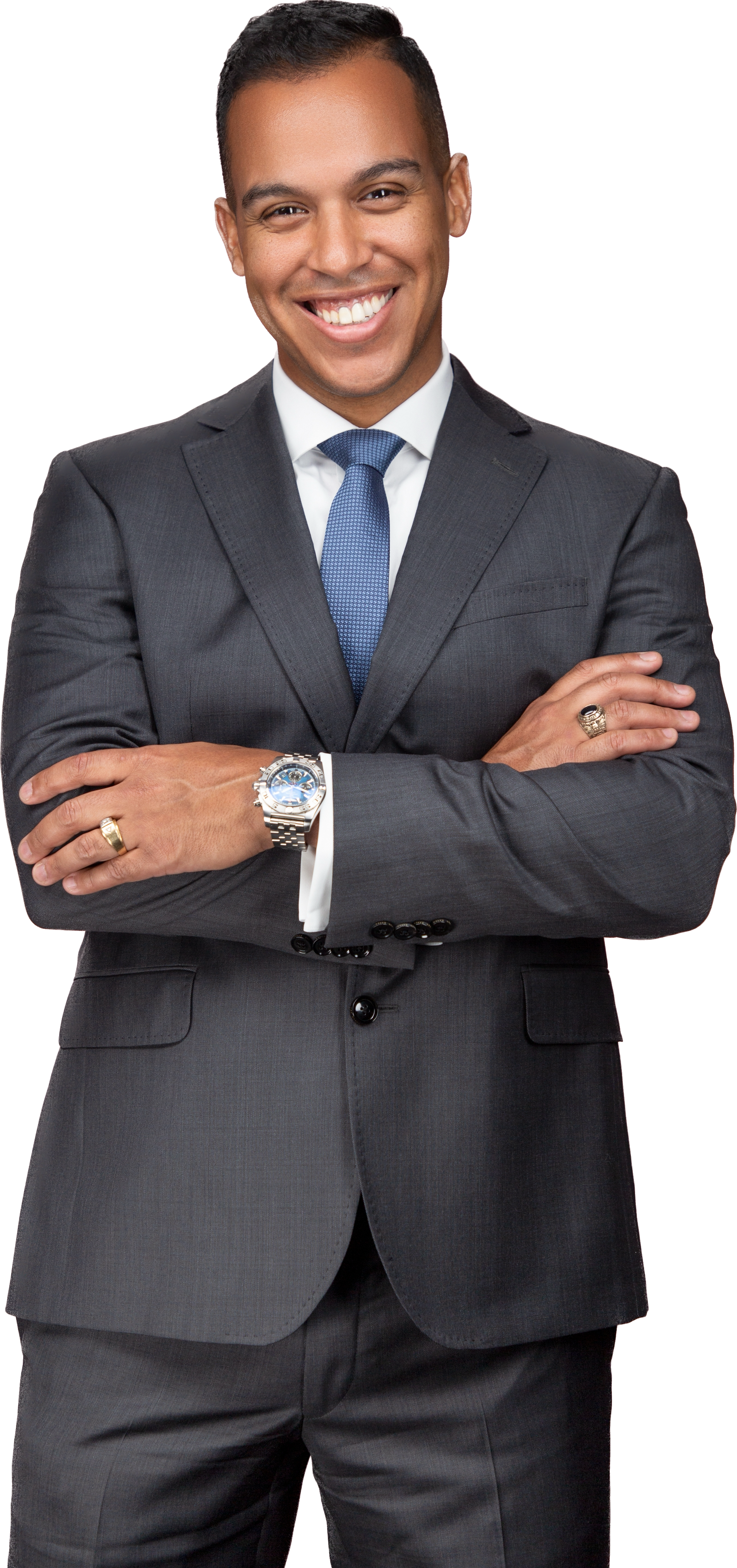A Step-by-Step Guide to Speak at SXSW
by Robert Solano
SXSW Conference, held annually in Austin, TX, presents an excellent platform to expand your network, gain knowledge, and showcase your business. As an expert in your field, you have the potential to speak at SXSW and should consider submitting a proposal for the March event. Our team previously organized a successful panel for my wife Zaira to speak on behalf of our law firm in 2019. This comprehensive guide outlines the necessary steps to create a compelling topic, recruit panel members, and prepare for your panel. Follow this step-by-step guide to increase your chances of being selected as a speaker at SXSW.
Katy Perry, Amy Winehouse, Tim Ferris, FourSquare, and Twitter all share a common denominator – they all had their first big break at the South by Southwest Conference (SXSW). Attending conferences like SXSW can be daunting, but don’t be discouraged. You too are more than capable of speaking at SXSW, and this blog post will show you how. I will share my personal experience of getting a panel approved at SXSW and the benefits it brought.
Conferences offer a great opportunity to network, meet potential investors, hone your public speaking skills, and learn new skills. SXSW, in particular, is one of the largest and most exciting conferences to attend. Every March, approximately 75,000 entrepreneurs, industry leaders, artists, and curious minds gather in Austin, TX for the South by Southwest Conference, also known as “South By” or SXSW. With over 2,100 sessions and more than 700 official parties and special events, SXSW is a not-to-be-missed event.
The Austin Convention Center serves as the primary venue for the conference, but SXSW extends across the entire city. With over 100 participating hotels, restaurants, bars, and companies, there’s never a dull moment during the event. Attendees can expect keynote speeches from Fortune 100 CEOs like Elon Musk, listen to future US Presidents speak, and even attend parties with celebrities like Snoop Dogg. Other conference highlights include mentor sessions, live podcast recordings, book signings, blockbuster film premieres, pitch competitions, and interactive panels. The level of raw and amazing talent present at SXSW is unparalleled.
I have had the pleasure of attending the conference four times and have always been impressed with the quality of the lineup and overall experience. Over the years, I’ve been fortunate enough to see inspiring speakers and artists like Melinda Gates, Elon Musk, Ira Glass, Stacy Abrams, Talib Kweli, Pussy Riots, and many more. It’s hard to imagine being on the same schedule as industry leaders like Bernie Sanders or John Boehner, but the truth is – it’s possible!
In 2019, I organized a panel for our law firm, Solano Law Firm, that explored immigration issues related to military families. The panel was titled “Defending the Nation: Immigrants in the Military” and ran for 60 minutes. We had a diverse group of speakers who shared their insights and experiences on the topic.
For SXSW 2020, my wife Zaira and I submitted two panel proposals. Zaira’s panel will focus on “Powerhouse Women: Changing the Legal Industry,” while mine will explore “Innovating at the Speed of Special Ops.” This will be Zaira’s second year speaking at SXSW, and I was glad to help her organize her panel.
While the submission window for the upcoming March SXSW is now closed (it is September as I write this), if you’re interested in speaking at the event in the future, I recommend starting to plan early. Based on my experience organizing three panels, here are the steps you should take to speak at SXSW. These steps are specific to the Interactive track, which covers most panels, presentations, and keynote speeches. The steps may differ slightly if you plan to speak on the EDU track or participate in the startup track or pitch competitions.
Note: This article was originally written in 2020. The specific costs, dates, and requirements for panel submissions may have changed slightly.
Step 1: Attend SXSW Conference, March one year prior
To prepare for our panel, the first step we took was to attend the SXSW Conference the year before. During the conference, we attended various panels to learn different panel styles and topics. We also networked with different leaders in our industries. For example, in 2018, we met Zaira Garcia, a political activist with FWD.us. A year later, Zaira G. joined our immigration panel as a speaker (not to be confused with my wife, Zaira Solano, who also spoke on the panel).
Registration is now open for SXSW 2020, and there are various badge options available. The full Platinum Badge provides access to all interactive panels, music, and film events, and costs $1,200-$1,800. If you only plan on attending the interactive panels and keynote speeches, then the Interactive Badge may be a better option, costing $800-$1,400. Students can get a badge for as little as $395, and some veteran organizations offer free badges to veterans.
One of the benefits of speaking at SXSW is that speakers receive the Platinum Badge for free, which is valued at $1,200.
Registering to attend SXSW is relatively easy, but finding lodging can be a challenge. Most people prefer to stay in the city to be within walking distance of the different speeches and panels, and to take breaks in their room when needed. However, hotels in Austin during SXSW are very expensive, with typical hotels like the Hilton costing $700-$1,000 per night, and the nicer hotels like the JW Marriott or Four Seasons easily costing $1,500-$2,000 per night. Staying in a hotel further away, like in Round Rock, and Ubering to Austin each day can be significantly cheaper. Alternatively, booking an Airbnb can cost anywhere from $200 to $1,000 per night.
When we attended SXSW, we stayed in an Airbnb in Zilker Park, which was only a 10-minute Uber ride from downtown Austin. The next year, we stayed at the Marriott in town and used eScooters to commute everywhere. This year, we are planning to stay at an Airbnb again. Both options have their pros and cons, but it’s important to make your lodging reservation early if you plan to attend SXSW.
Attending a SXSW conference is a great experience, and we recommend attending before speaking at the conference. In 2018, we had the opportunity to see Elon Musk speak at SXSW.
Step 2: Decide on a Topic, January to April
To speak at SXSW, you must submit a proposal. The key elements of the proposal are the title, description, and speaker information. Before you develop the title and description, it is important to think like a SXSW committee member. The SXSW committee prides itself on presenting topics that are thought-provoking, relevant, and diverse.
For instance, while blockchains and cryptocurrencies were interesting topics five years ago, they are now an oversaturated market. A talk about Bitcoin mining is unlikely to be accepted by the SXSW committee because it is not thought-provoking or diverse. A better topic would be one that explores how winemakers are using blockchain to track wine quality and reduce counterfeits, and how other industries could learn from this. (This was a SXSW 2018 topic.)
It’s important that you are interested in the topic, although you don’t need to be an expert on it (more on that later). However, being an expert or working in an industry related to the topic would certainly help.
Developing an interesting and thought-provoking topic can be the hardest challenge for most people. Therefore, it’s recommended that you begin developing your topic as soon as possible. Ideally, you should have a draft of your idea before attending SXSW in March, one year before you intend to speak at SXSW. If you have a draft of your idea going into SXSW, you can use the conference to refine your topic and network with other people in your industry who may be good panel members for the following year.
After the SXSW conference, take a month to refine your panel topic and draft a description of your panel proposal.

One of our panel proposals.
Step 3: Invite Panel Members, May to July
Once you have a topic, the next step is to identify and select panel members. Unless you are a well-known public speaker with a well-rehearsed hour-long presentation, it is recommended that you plan on having panel members. A panel typically consists of two to four individuals, and it’s important to keep in mind that the SXSW committee is looking for diverse thoughts.
For example, if your topic is on blockchain technology, it may not be enough to have four experts from the same company discussing the subject. Instead, you may want to consider panel members from diverse backgrounds, such as a blockchain entrepreneur, a lawyer specializing in blockchain regulations, a professor studying the social implications of blockchain, and a journalist covering blockchain trends.
To find potential panel members, you can reach out to your alumni organization for recommendations, ask colleagues for introductions to senior executives, cold-call interesting people you read about in the news, send emails to journalists in the industry, or send direct messages to interesting people on Twitter. When contacting potential panel members, it’s helpful to have a draft topic, a description of the topic, and a list of potential panel members.
If you don’t have expertise in the topic area, you can still pitch yourself as a moderator for the panel and focus on bringing together three other speakers who have more experience in the field than you do.
From May to July, you should invite and confirm your panel members. After they confirm their participation, you should collect their basic information, such as their bio, headshot, contact info, and previous speaking experience. Having this information on hand will make it easier to prepare your panel proposal and promote your panel if it’s accepted.
Step 4: Record a Video, July
Submitting a 2-3 minute video with your panel proposal is recommended by the SXSW committee. Your video should highlight your topic, demonstrate the speaking ability of at least one panel member, and be interesting. While professional video quality is not required, you should aim to have the best sound and lighting possible. For our 2019 panel proposal, I filmed a short two-minute video of my wife using a cheap lapel microphone connected to our iPhone 8. We used a tripod and filmed during the Golden Hour with my wife facing into the sun. For my 2020 panel proposal, I edited 60 seconds of interesting B-Roll footage from a public database and voiced over it. You can submit a professionally shot and expertly edited video, but simplicity can work just as well. A video was not mandatory when we applied, but it can increase your chance of getting your panel approved.
Step 5: Submit the Panel Proposal, July
The panel proposal requires creativity. A catchy title and description are vital in getting your panel approved. The SXSW committee receives over 6,000 proposals each year, and a compelling title and description can make your proposal stand out. The SXSW Panel Picker is the definitive resource for proposal information and where you will submit and vote for panels. The panel proposal includes the video, title, description, speaker bios, and other necessary information. SXSW will announce the official timeline and submission deadline in 2020, but proposals are expected to be due in July 2020. The proposal window typically lasts about three weeks.
Step 6: Reserve Accommodation (Optional), July
As previously mentioned, hotel rooms and Airbnbs at SXSW tend to sell out quickly. If you know for sure that you will be attending SXSW as either a speaker or a registered attendee, it’s wise to consider reserving your lodging as early as possible. Keep in mind that if you’re selected to present, you won’t know the exact date of your presentation until November/December. It’s a good idea to inquire about the hotel’s refund policy and whether there are penalties for shortening your stay if you decide not to stay for the entire 10-day conference (most people prefer attending for four nights).

Our promotion flyer.
Step 7: Promote Your Panel, August
In August, the SXSW community votes on panel proposals, which counts for about 30% of the selected panels. This voting period lasts for approximately three weeks.
During this time, it’s crucial to promote your panel as much as possible through social media, newsletters, and personal networks. However, one drawback of the panel picker process is that voters can only cast their votes if they have a registered SXSW account. While it’s free to register, it can be a barrier that discourages non-SXSW friends and followers from voting. To overcome this obstacle, consider targeting individuals in your network who have attended SXSW in the past and likely already have an account.
Step 8: Wait, October or December
The SXSW committee typically announces the primary panel selections in October each year. They will notify the panel organizer of their selection via email. If your panel is not selected in October, the committee may notify you that you were selected as an alternate. The committee usually makes alternate selections around December. If your panel is not selected at this point, then you will need to try again the following year.
Step 9: Confirm Panel Members, November to December
After the SXSW committee selects your panel proposal, they will notify the panel organizer via email and provide a deadline to confirm the attendance of the panel members. It is important to reply to this email within the provided deadline, as failure to do so may result in forfeiting your opportunity. In some cases, panel members may have to be replaced, so it’s important to have backup options in mind.
Step 10: Submit Changes, December to February
Once the panel is accepted, the panel organizer will receive access to a panel session dashboard. Through this dashboard, the organizer can submit minor changes to the presentation title, description, and other elements up until the deadline. It’s important to note that major changes to the panel may require approval from the SXSW committee.
Step 11: Prepare and Rehearse, January to March
To prepare for our 2019 panel, we held four teleconferencing meetings leading up to the event. During these sessions, we outlined our panel and developed discussion points. Our panel followed a common format which included 20 minutes of introductions (5 minutes per panel member), 20-30 minutes of discussion led by the moderator, and 10 minutes of questions and answers.
Originally, we planned to meet in Austin the day before the panel to do final coordination and meet face-to-face for the first time. However, due to delayed flights, we ended up meeting for lunch just two hours before the panel.
For our 2020 panel, which includes two very senior executives, it has been more difficult to schedule meetings. Therefore, we plan to only have one phone call prep session. To prepare for that session, I will send read-ahead material with my portions of the panel already typed out, including suggested talking points for them.
The way you prepare for your panel will depend on the panel members and your relationship with them.
Step 12: Hire Videographer (Optional), January
If you plan to record or stream video of your panel, you must request prior approval from SXSW. While many people livestream panels to Facebook through their phone, the SXSW committee requires the use of professionally licensed and insured video companies. These companies can be expensive, averaging around $2,000 for a 60-minute recording. For our panel, it was important to have a professional quality video that we could share across Instagram and social media. Although our live audience was small, our recorded video will last for years on the internet and will be seen by thousands of people in the future (you can watch our 2019 panel video by clicking here).
Step 13: Invite Guests (Optional), January to March
Each panel member is allowed to invite one Day Guest who can attend the panel and any other panels occurring on the same day.
Step 14: Attend SXSW, March 2021
Badge Pick-Up
Before your panel, you must pick up your badge from the convention center. Badge pick-up is available every day during the festival, but you should plan for at least a half-hour wait time. If you have a day guest, plan to meet them at the convention center early in the morning of your panel to assist them in getting a day pass.
Arrive and Take Photos
A few days before your panel, your event coordinator will notify you of your Green Room location. You and your panel members should arrive and check-in at the Green Room one hour before your panel. Half an hour before your panel, event coordinators will escort you to your presentation room. During this half-hour, you can meet with the video crew and load your PowerPoint slides onto their computer via a USB thumb drive. You can also take staged photos of the panel members pretending to speak, which can later be used for promotional purposes.
Deliver Your Panel
When it’s time, begin your presentation, and end it 60 minutes later. Although there is an event coordinator in the room, they are mostly there to ensure that the audiovisual system is working. It is mostly up to the panel members to start and finish on time. Ensure that your panel members adhere to the agreed-upon format and time limits.
Network
During the presentation, have a title screen with your social media info up. Encourage the audience to tweet updates and photos during the panel. Afterward, take some time to engage with audience members who stayed around and chatted with you. This is a great opportunity to network and make valuable connections.
After Action Review & Celebration
After the panel, celebrate your success and take plenty of photos and boomerangs. Consider going out to dinner with your panel members to discuss how you could improve next year.

Our successful SXSW panel on Immigration and the Military.
Step 15: Reap the Benefits
Speaking at SXSW can be costly in terms of time and money, but it’s worth it. It takes a lot of effort to plan a panel, coordinate with panel members, and travel to Austin. Financially, you could easily spend over $5,000 in 5 days, including first-class airfare, expensive hotels, eating out every day, and hiring a videographer. However, the benefits of speaking at SXSW, including the exposure and connections made, can make it a valuable investment.
Below are a few examples of how Zaira Solano and Solano Immigration Law Firm benefited from speaking at SXSW in 2019. Firstly, SXSW is a highly respected international conference and our law firm believes that we need a greater national discussion about the impact that immigration policies have on our military. Speaking at SXSW provided us with a great platform to share our message with a wider audience, many of whom were previously unaware of this topic.
Networking was another key benefit of speaking at SXSW. We carefully selected panel members who had great stories to share and experience with immigration. Sharing a panel with three other members helped us build a relationship with these amazing individuals. After the presentation, we also met with audience members and established additional network relationships with them, both in-person and through social media. SXSW is a great opportunity to expand your professional network.
Speaking at SXSW also reinforced our brand image as a thought leader in the field of immigration law. There are thousands of immigration law firms, but few get the opportunity to speak at SXSW. The panel helped to expand our brand awareness to other people who may not be interested in immigration topics but are interested in SXSW.
An hour-long panel at SXSW provided enough content for at least five future blogs, newsletters, and YouTube videos. Furthermore, our video and credentials as speakers at SXSW will help improve our ability to speak at future high-profile events, such as TEDx or SXSW next year.
Lastly, as a speaker, we received a free platinum badge, a $1,200 value. This badge allowed us to attend all SXSW events throughout the two-week conference, including the interactive presentations and workshops, the film events, and the music shows. SXSW is a unique opportunity to engage with a diverse range of industry leaders, from Hollywood A-Listers to top Billboard artists, senators, presidential candidates, and Fortune 100 CEOs. Trading an hour of your time to speak in exchange for access to this conference is an amazing benefit.
There are numerous other benefits of attending SXSW that I have not mentioned, but one important element is that many of the benefits manifest themselves years later. For example, our panel moderator this year was a woman that we met at the previous year’s SXSW. Many of the ideas that I learned while attending other panels at SXSW have gradually been implemented into my company, mindset, and future business plans. I may never realize the full benefit of attending SXSW, but I know that I am headed in a better direction because of it.
In conclusion, speaking at SXSW is a must for any entrepreneur. I wish you the best of luck with your future SXSW proposal, and if you ever need a panel member for your awesome topic, please send me an invite!








